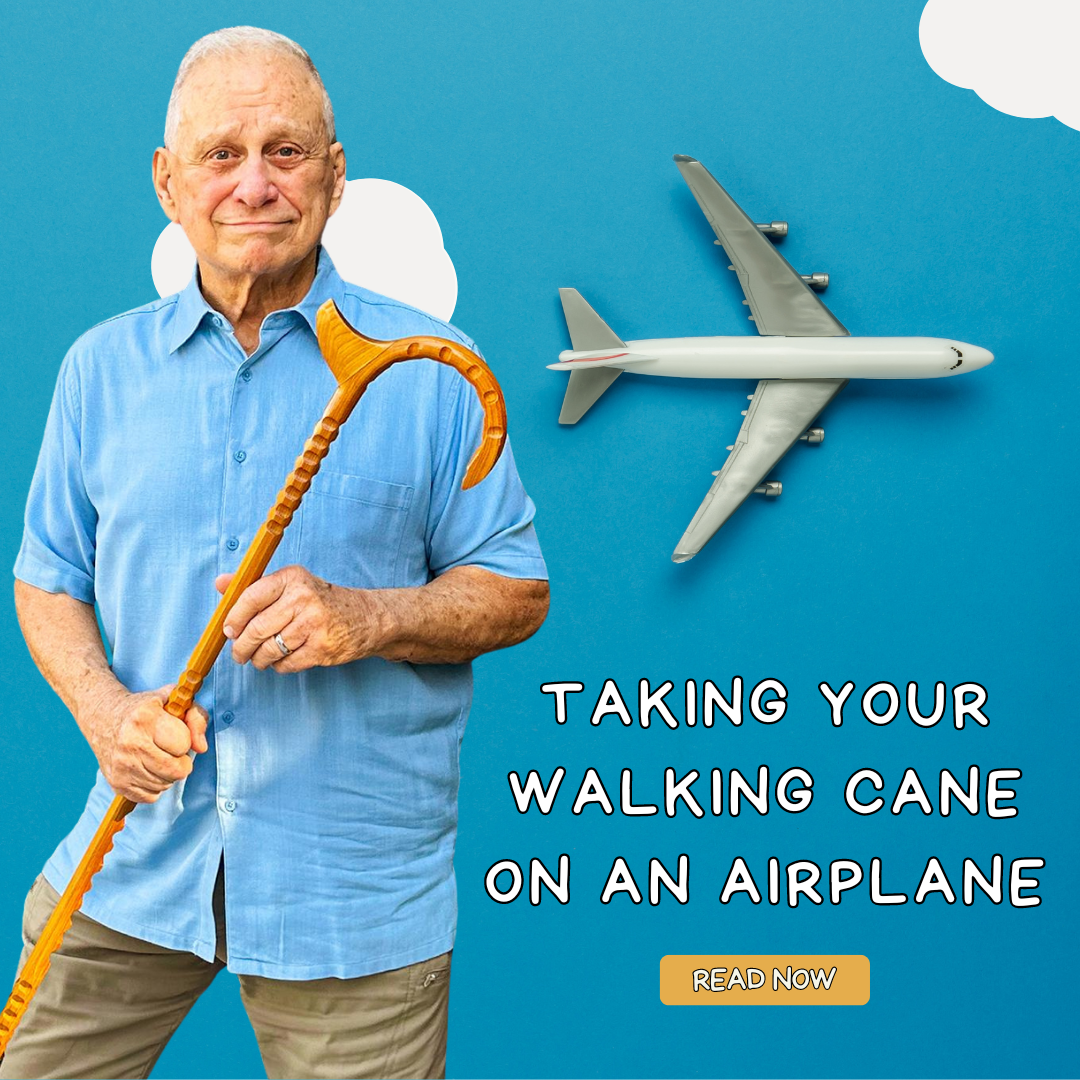Navigating Air Travel with Your Walking Cane: A Cane Master's Guide

Flying can be a daunting experience for many, especially those who rely on walking canes for mobility assistance. Whether you're a seasoned traveler or embarking on your first flight with a cane, navigating airport security and ensuring a smooth journey is essential. As a Cane Master, you have the right to bring your cane onboard, and HIPAA regulations protect your privacy regarding medical inquiries. Here's your comprehensive guide to taking your walking cane on an airplane without any unnecessary hassle.
Understanding Your Rights:
First and foremost, it's crucial to understand your rights as a cane user when traveling by air. According to the Americans with Disabilities Act (ADA), individuals with disabilities, including those who require walking aids such as canes, are entitled to equal access to air travel. This means that you have the right to bring your cane with you in the cabin of the aircraft.
Preparing for Security Screening:
Airport security procedures can be intimidating, but with proper preparation, the process can be smoother. When approaching the security checkpoint, inform the Transportation Security Administration (TSA) officers that you require your cane for mobility assistance. You are not obligated to disclose any specific medical information under HIPAA regulations, so feel confident in asserting your rights while maintaining your privacy.
Navigating Security Screening:
Your cane will need to undergo screening along with your other belongings. TSA officers may ask to inspect your cane visually or perform additional screening procedures such as swabbing for explosives residue. Stay patient and cooperative during this process, as it is designed to ensure the safety of all passengers.
Traveling with Multiple Canes:
If you use multiple canes for different purposes or prefer to have backups during your travels, you are permitted to bring them onboard. However, it's essential to consider practicality and space limitations, especially if you're traveling with carry-on luggage. Pack your additional canes securely to prevent damage during transit.
Avoiding Unnecessary Attention:
While you may be a skilled practitioner in cane self-defense techniques, it's advisable to refrain from advertising these skills at the airport. While your cane is a legitimate mobility aid, drawing attention to its potential dual purpose could lead to unnecessary scrutiny or misunderstandings with airport authorities. Instead, focus on presenting yourself as a responsible and compliant traveler.
Final Tips for a Smooth Journey:
- Arrive at the airport early to allow ample time for security screening and any unforeseen delays.
- Consider contacting the airline in advance to request assistance or accommodations if needed.
- Ensure your cane is labeled with your name and contact information in case of loss or misplaced items.
- Familiarize yourself with the layout of the airport and any accessibility services available to assist you during your journey.
In conclusion, traveling with your walking cane by air is entirely feasible and within your rights as a Cane Master. By understanding your rights, preparing for security screening, and following these tips, you can navigate the airport with confidence and enjoy a stress-free travel experience. Safe travels, and may your journey be as smooth as the glide of your trusted cane.

